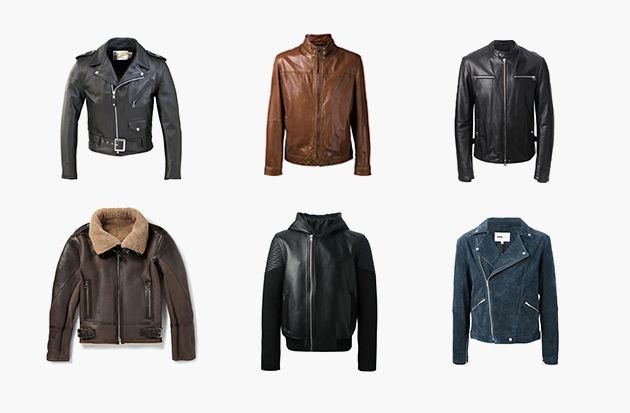Choosing a leather jacket is a big deal. Being able to identify real leather may be all you need to make up your mind and know that your style is on point for the quality you’re going to get out of that jacket. The smell of the leather should be earthy, soft, with natural grain and slight flaws. We share in this blog some hints on how to recognize good craftsmanship—for instance, substantial, soft feel, and thick, even stitches. You can opt for a really good leather jacket and have it last for years if you know the warning signs and become an informed buyer. Let’s look at those right away.
1. Analyze the leather
First, check the quality of the leather. It would be good to have a feel for the leather jacket; perhaps take note of how thick or thin it is and if it bends easily. For high-grade leather, you want it to be a bit thick to give it more strength and resistance to wear over time. Real leather has to be soft and smooth to the touch; at the same time, it also needs to be flexible—bending without too much cracking or creasing.
Another very important factor is weight. Real leather is quite sturdy, so a nice leather jacket should have some weight to it. The best replicas usually are, at best, somewhat lighter and lack the soft thickness of real leather.
2. Stitching and lining
The details are crucial in determining the quality of a leather jacket. Examine the jacket’s lining and stitching for obvious indications of quality. High-quality leather jackets are expertly sewn together. Look for any evidence of fraying, uneven stitching, or loose threads. An excellent quality jacket will feature reinforced or durable stitching in stressful places to ensure lifespan. Pay close attention to these seams.
The lining holds similar significance. The smooth, well-attached lining of a luxurious leather jacket adds to its comfort. Conversely, the leathers jackets that are cheap could have a loose or flimsy lining, which could detract from the item’s longevity as well as appearance.
3. Comfort
When you put on a leather jacket, how it feels against your skin tells you a lot about its quality. The best leather jackets are soft to the touch, cozy, and flexible, molding to your body as you wear them. This plush sensation comes from the use of top-notch full-grain leather, which has an impact on both durability and smoothness. On the flip side, cheaper jackets made from lower-grade top-grain or corrected-grain leather often feel rough, stiff, and uncomfortable. These subpar materials don’t have the natural give and coziness of full-grain leather, which means they’re not ideal if you want a jacket that’ll last and fit well for years to come.
4. Design and Style Elements
This is where a leather jacket really gets made or broken. Here are some details to consider:
- The collar and lapel construction should be good, sitting well on you, back in the jacket. The shape is a consideration for the style jacket in question, be it the classic bomber or a more modern moto jacket.
- Your pockets should work well and also be suitably placed. The stitching around them should be sturdy, and they should be deep enough to be practically useful without messing up the jacket’s shape.
- Some leather jackets have quilting or padding as a means of warming up or as part of the look. The stitching for these parts should be exact, and the padding should spread out evenly with no bumps.
- Any embroidery or form of embellishment on the jacket should be of top quality and properly attached. The design shall be intricate and very well done, with no loose threads or flaws of any sort.
5. Brand reputation
A good brand tells you a lot about how well a leather jacket is made. Big-name companies put money into top-notch materials and skilled workers to keep their good name. Before buying a leather jacket, research the brand background, what customers say, and whether they have awards. A company that is experienced in producing high-quality leather products is likely to produce a jacket that you can be proud to wear. If you search for a trustworthy brand from leather jackets stores near me, there’s every likelihood you’ll get a jacket that looks good, lasts long, and is put together well—exactly what you’re after.
6. Look for the label
One way to tell if a jacket is made of real leather is to look for labels that state “genuine leather” or “real leather.” But be aware that some manufacturers could refer to a jacket as “leather,” even though it is actually composed of a combination of synthetic and real materials.
7. Price
When it comes to leather jackets, you get what you paid for. Although price is not normally a selection criterion, it can nevertheless provide some useful information. For example, quality leather will cost more because the raw materials have greater value and more workmanship is required. Very low prices are best avoided as they may indicate that the material used, or the shortcuts taken in its production, are inferior.
8. Return Policy
Does the store where you are purchasing the leather jacket allow returns? If not, it’s time to think about selecting another supplier. You should be aware of the norm that trustworthy sellers allow returns for their products. Leather jackets are not the only exception to this rule. This is true for all consumer product sales. The seller should let you return the item within a specific window of time from the date of purchase, unless they’re trying to take advantage of you. Thus, stay away from a vendor and pick another one if they do not accept returns for their leather jackets.










